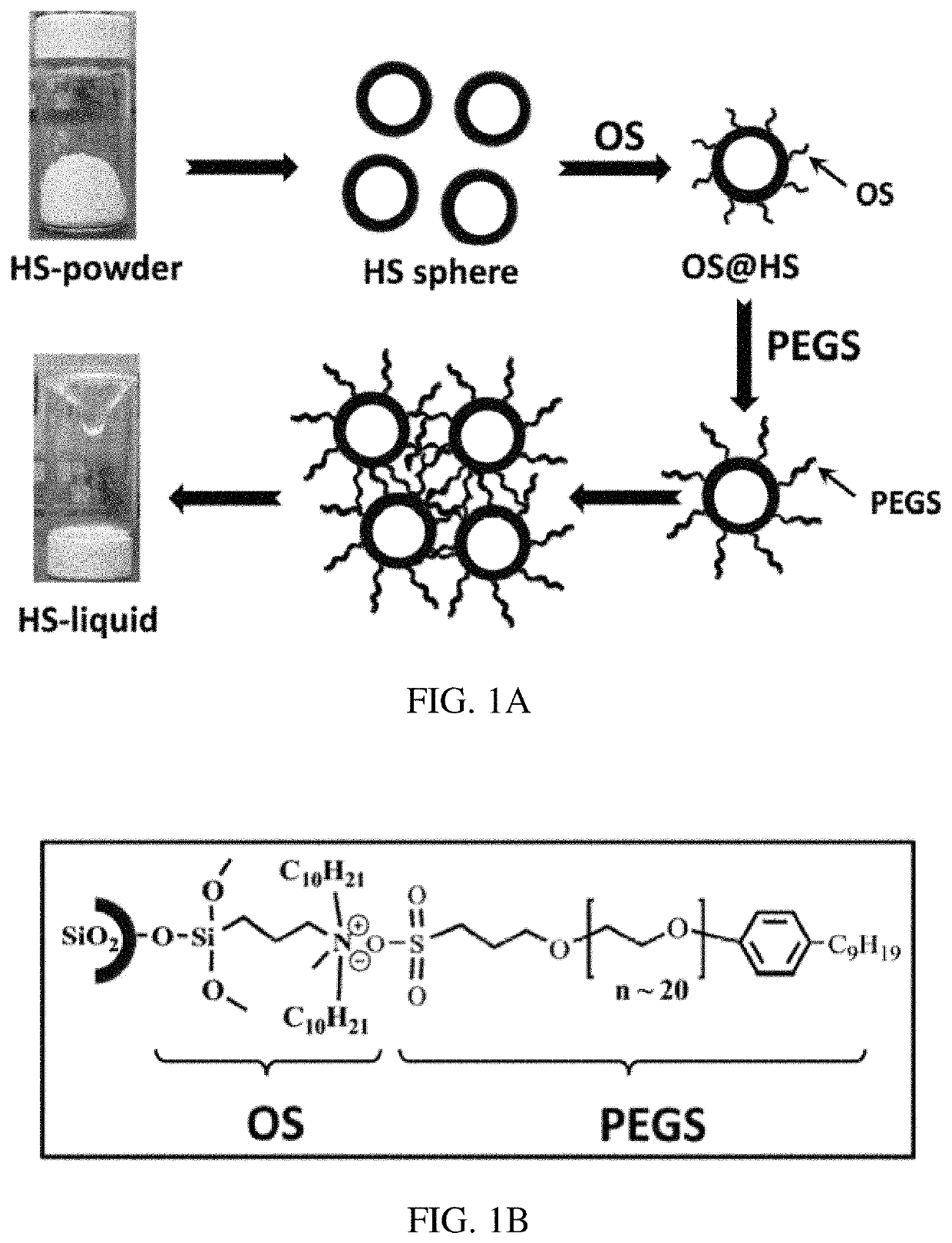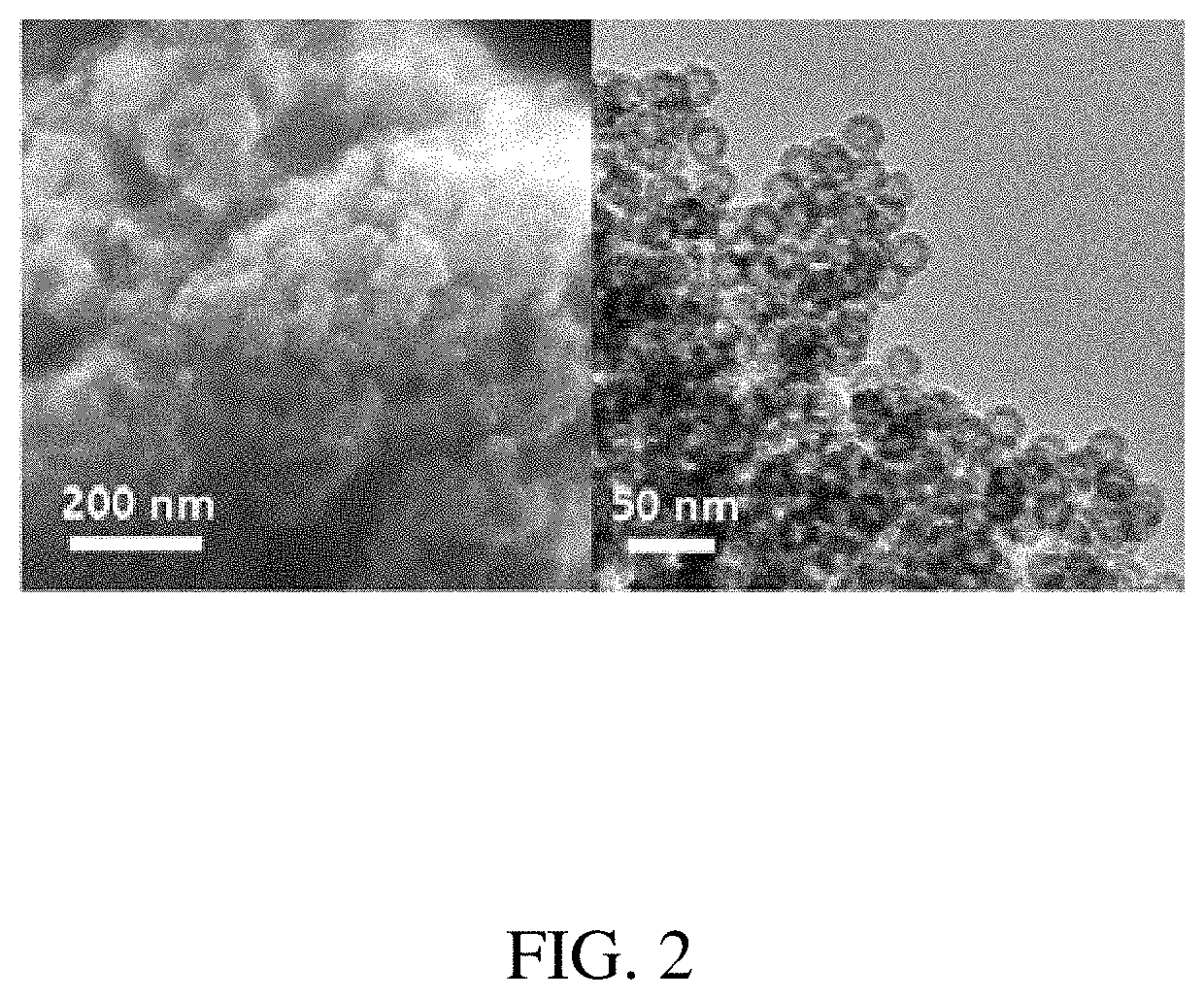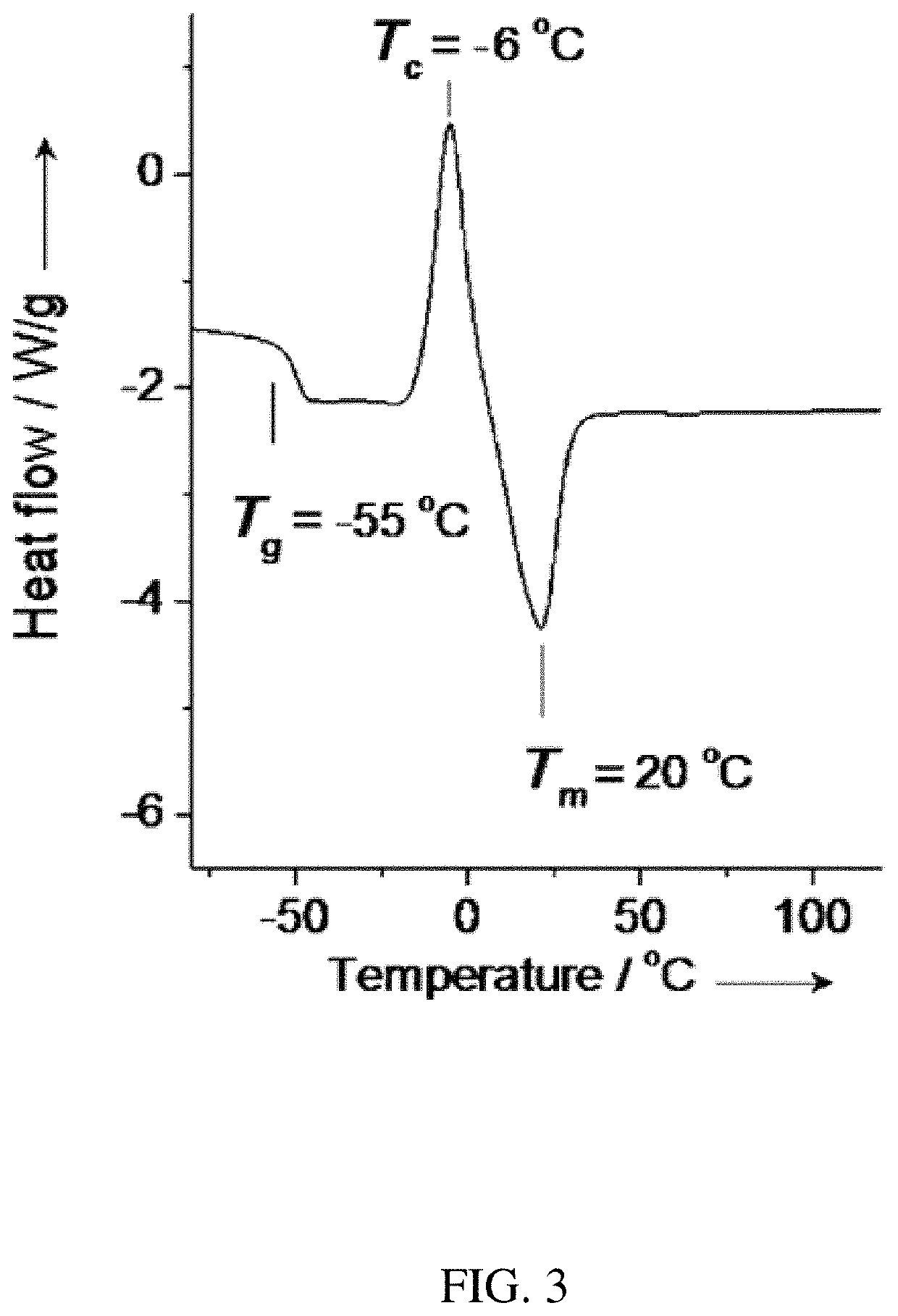Porous thermally insulating compositions containing hollow spherical nanoparticles
a technology of nanoparticles and compositions, applied in the direction of parallel plane units, mechanical instruments, synthetic polymer active ingredients, etc., can solve the problems of low transparency of conventional thermal insulating materials, specialized housings imposing significant constraints on such materials, and gradual deterioration of transparency, etc., to achieve low tg and melting point (tm), weakened ionic interactions, and high viscosity porous liquid adhesives
- Summary
- Abstract
- Description
- Claims
- Application Information
AI Technical Summary
Benefits of technology
Problems solved by technology
Method used
Image
Examples
examples
Preparation and Analysis of a Thermally Insulating Composition
[0030]A Type I porous liquid based on hollow silica (HS) spheres was fabricated in a two-step synthetic procedure according to the general scheme shown in FIG. 1A. In order to preserve the hollow structures in the liquid state, it was found necessary to prevent the fluid medium from filling the cavities. HS spheres with microporous shells that block species larger than 1.9 nm were first synthesized as the core particles. Then the particle surface was modified with a positively charged organosilane (OS) moiety with molecular size larger than 2.0 nm as the corona. In particular experiments, the positively charged OS molecule was (CH3O)3Si(CH2)3N+(CH3)(C10H21)2Cl−. In these steps, the OS molecules selectively react with hydroxyl groups bound to the silica shell surface, which leads to a permanent covalent attachment of a corona layer onto the hollow particles (denoted by OS@HS). The chloride counter anion balancing the posit...
PUM
| Property | Measurement | Unit |
|---|---|---|
| diameter | aaaaa | aaaaa |
| mean particle size | aaaaa | aaaaa |
| mean particle size | aaaaa | aaaaa |
Abstract
Description
Claims
Application Information
 Login to View More
Login to View More - R&D
- Intellectual Property
- Life Sciences
- Materials
- Tech Scout
- Unparalleled Data Quality
- Higher Quality Content
- 60% Fewer Hallucinations
Browse by: Latest US Patents, China's latest patents, Technical Efficacy Thesaurus, Application Domain, Technology Topic, Popular Technical Reports.
© 2025 PatSnap. All rights reserved.Legal|Privacy policy|Modern Slavery Act Transparency Statement|Sitemap|About US| Contact US: help@patsnap.com



